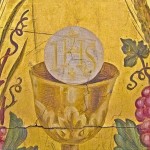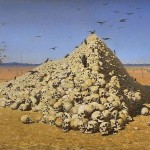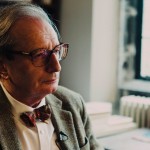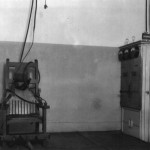
John Paul II died nine years ago today. His background in the theater and poetry, especially Polish Romanticism, is something that is frequently overlooked. Needless to say, his connection with the Romantic theorist (and poet) Samuel Taylor Coleridge, which I’d like to highlight today, does not garner any attention.
Coleridge is one of those curious instances of a scholar who is known for perhaps the wrong things. True, his poetry is of the highest order, but his stature as a philosopher and theologian is as great, if not greater. His underground influence is immense, in fact, did you know that Coleridge invented the word “scientist”?
I suspect Coleridge the philosopher-theologian will become one of those great figures–like Hopkins, Kierkegaard, or Wojtyla’s favorite poet Cyprian Norwid–who will become discovered late, very late. The tip of the Coleridge iceberg is currently being explored by, most notably, Douglas Hedley in Coleridge, Philosophy, and Religion and J. Robert Barth, SJ in The Symbolic Imagination: Coleridge and the Romantic Tradition.
Here is one of the most representative artistic-theological statements from Coleridge’s Biographia Literaria that will give you a sense of where he’s coming from:
“The Imagination then I consider either as primary, or secondary. The primary Imagination I hold to be the living Power and prime Agent of all human Perception, and as a repetition in the finite mind of the eternal act of creation in the infinite I Am. The secondary I consider as an echo of the former, co-existing with the conscious will, yet still as identical with the primary in the kind of its agency, and differing only in degree, and in the mode of its operation. It dissolves, diffuses, dissipates, in order to re-create; or where this process is rendered impossible, yet still at all events it struggles to idealize and to unify. It is essentially vital, even as all objects (as objects) are essentially fixed and dead.”
What he’s saying here is that the imagination is a faculty we have for putting together the manifold of intuition into an intelligible experience. In turn, this process is analogous to the Genesis account of the act of creation where God is poetically presented as ordering the chaos.
What’s more, the imagination, or putting together the many into one, is something we do on a daily basis in what Coleridge calls the primary imagination. The secondary imagination, basically the act of artistic creation, is just a special case of using the imagination to once again break apart experience and put it together into a unified work of art.
The fascinating thing is how fluid the boundaries between theology, everyday life, and artistic creation are for Coleridge.
It might be surprising for you to see how much John Paul II’s “Letter to the Artists” advocates similar sentiments. Here is what John Paul II, a child of Polish Romanticism (see this anthology for primary sources):
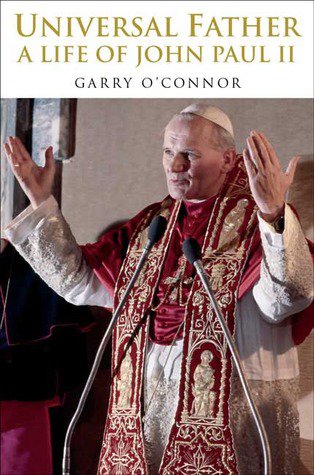
“What is the difference between ‘creator’ and ‘craftsman’? The one who creates bestows being itself, he brings something out of nothing—ex nihilo sui et subiecti, as the Latin puts it—and this, in the strict sense, is a mode of operation which belongs to the Almighty alone. The craftsman, by contrast, uses something that already exists, to which he gives form and meaning. This is the mode of operation peculiar to man as made in the image of God. In fact, after saying that God created man and woman ‘in his image’ (cf. Gn 1:27), the Bible adds that he entrusted to them the task of dominating the earth (cf. Gn 1:28). This was the last day of creation (cf. Gn 1:28-31). On the previous days, marking as it were the rhythm of the birth of the cosmos, Yahweh had created the universe. Finally he created the human being, the noblest fruit of his design, to whom he subjected the visible world as a vast field in which human inventiveness might assert itself.
God therefore called man into existence, committing to him the craftsman’s task. Through his ‘artistic creativity’ man appears more than ever ‘in the image of God,’ and he accomplishes this task above all in shaping the wondrous ‘material’ of his own humanity and then exercising creative dominion over the universe which surrounds him. With loving regard, the divine Artist passes on to the human artist a spark of his own surpassing wisdom, calling him to share in his creative power. Obviously, this is a sharing which leaves intact the infinite distance between the Creator and the creature, as Cardinal Nicholas of Cusa made clear: ‘Creative art, which it is the soul’s good fortune to entertain, is not to be identified with that essential art which is God himself, but is only a communication of it and a share in it.’
That is why artists, the more conscious they are of their ‘gift,’ are led all the more to see themselves and the whole of creation with eyes able to contemplate and give thanks, and to raise to God a hymn of praise. This is the only way for them to come to a full understanding of themselves, their vocation and their mission.”
Once again, we see the close ties, the analogies, between Divine creativity, everyday experience, and the special gift of the artist.
Literature and the imagination are not luxuries. They are necessities.
I’d like to leave you with an example of John Paul II putting all of these together in an excerpt from his Roman Triptych. The pope’s poem is a meditation upon Michelangelo’s Sistine Chapel and our need for artists to help us see God’s workings more clearly in special events and in everyday experiences.
“Epilogue”
It is here, at the feet of this marvellous Sistine profusion of colour that the Cardinals gather—
a community responsible for the legacy of the keys of the Kingdom.
They come right here.
And once more Michelangelo wraps them in his vision.
“In Him we live and move and have our being
Who is He?
Look, here the creating hand of the Almighty Ancient One, turned towards Adam….
In the beginning God created….
He, the all-seeing One….
The Sistine painting will then speak with the Word of the Lord:
Tu es Petrus—as Simon, the son of Jonah, heard.
“To you I will give the keys of the Kingdom”.
Those to whom the care of the legacy of the keys has been entrusted
gather here, allowing themselves to be enfolded by the Sistine’s colours,
by the vision left to us by Michelangelo—
so it was in August, and then in October of the memorable year of the two Conclaves,
and so it will be again, when the need arises
after my death.
Michelangelo’s vision must then speak to them.
“Con-clave”: a joint concern for the legacy of the keys of the Kingdom.
They will find themselves between the Beginning and the End,
between the Day of Creation and the Day of Judgment.
It is given to man once to die and after that the judgment!
A final clarity and light.
The clarity of the events—
The clarity of consciences—
It is necessary that during the Conclave, Michelangelo teach them—
Do not forget: Omnia nuda et aperta sunt ante oculos Eius.
You who see all—point to him!
He will point him out….
http://www.youtube.com/watch?v=NXyi82dYRxE


